Supply and Demand
Supply and Demand are two forces in the market that jointly decides what quantity of the good to produce and at which price to sell that good.
Markets
For now we will assume, that markets are perfectly competetive. It means, that no single seller or buyer could influence the price of good. If one seller increases the price for good, nobody would buy from him and the market price of the good will not change. Example is foreign exchange markets, agricultural markets, internet related markets(Ebay, Amazon) etc.
Demand
Law of Demand: Consumers demand more of a good the lower its price.
Quantity demanded is the amount of a good or service that buyers are willing and able to buy at a specific price. It is usually negatively related to price. We call this negative relationship the law of demand. (We will talk about exceptions later, but unless we are discussing those exceptions you should assume that at higher prices, quantity demanded is smaller.)
Demand for wheat
For example, when wheat prices are low, buyers are willing and able to buy more wheat. When wheat prices are high, buyers are unwilling or unable to buy more wheat. This might be due to each buyer buying less wheat, or due to some buyers ceasing to buy wheat at all and dropping out of the market. Suppose that when wheat costs $2/kg, buyers demand 140 kg/day. Suppose that when wheat costs $4/kg, buyers only demand 20 kg/day.
Let's show this in a demand schedule, with some additional fictitious datapoints:
| Price ($) | Quantity Demanded (kg) |
|---|---|
| 1 | 140 |
| 2 | 100 |
| 3 | 50 |
| 4 | 20 |

Demand for cofee
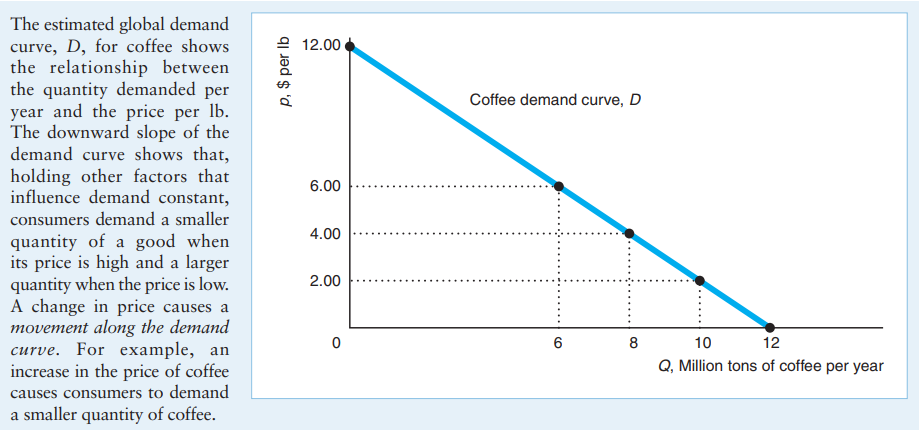
Supply
Supply provided is the quantity of the good and services that firms are willing to provide at the given price.
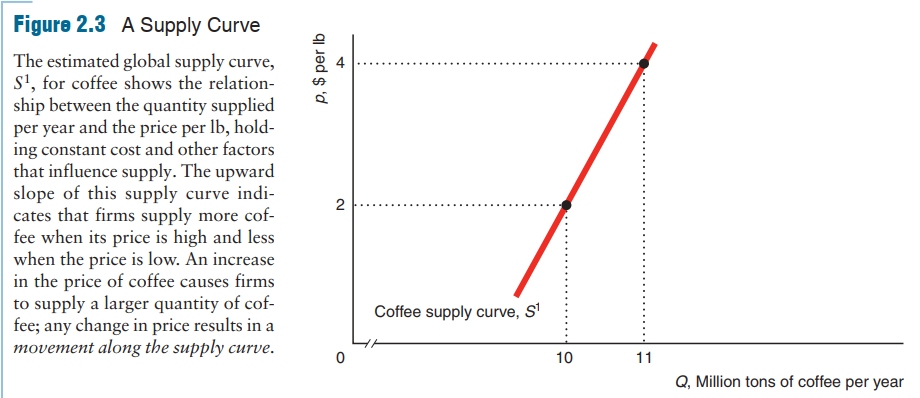
Although the Law of Demand states that the demand curve slope downward, wehave no “Law of Supply” that requires the market supply curve to have a particularslope. The market supply curve can be upward sloping, vertical, horizontal, or downward sloping. Many supply curves slope upward, such as the one for coffee. Alongsuch supply curves, the higher the price, the more firms are willing to sell, holdingcosts and government regulations fixed
Market Equilibrium
The supply and demand curves determine the price and quantity of goods and services in a market. The demand curve shows the quantity consumers want to buy at various prices, and the supply curve shows the quantity firms want to sell at various prices. Unless the price is set so that consumers want to buy exactly the same amount that suppliers want to sell, either some buyers cannot buy as much as they want or some sellers cannot sell as much as they want.
When all traders are able to buy or sell as much as they want, we say that the market is in equilibrium: a situation in which no one wants to change his or her behavior. The equilibrium price is the price at which consumers can buy as much as they want and sellers can sell as much as they want. The equilibrium quantity is the amount that consumers buy and suppliers sell at the equilibrium price
The equilibrium price and quantity are also sometimes called the market-clearing price and quantity. If all the buyers and sellers gathered together in a single marketplace, and buyers purchased as much as they were willing and able to at the equilibrium price, then the each buyer and seller would finish their business and go home for the day. There would be nobody left in the market trying fruitlessly to buy or sell additional goods at that price. Thus, this market is said to have cleared.
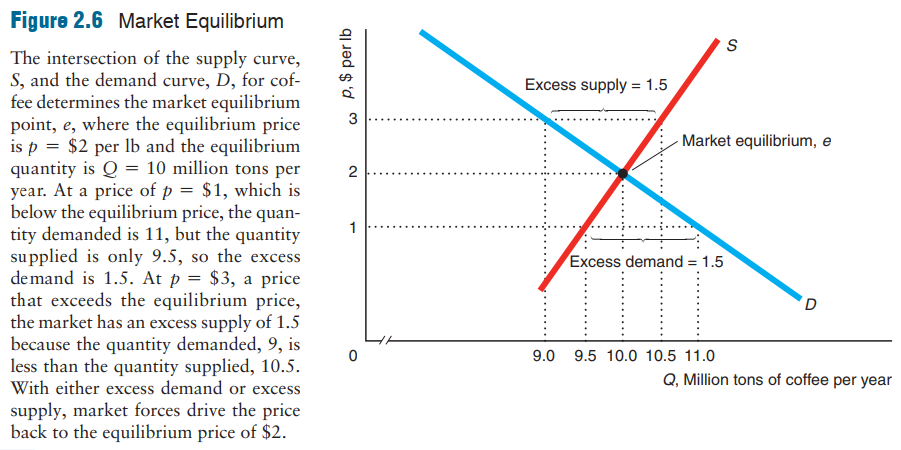
Schocks to Demand and Supply
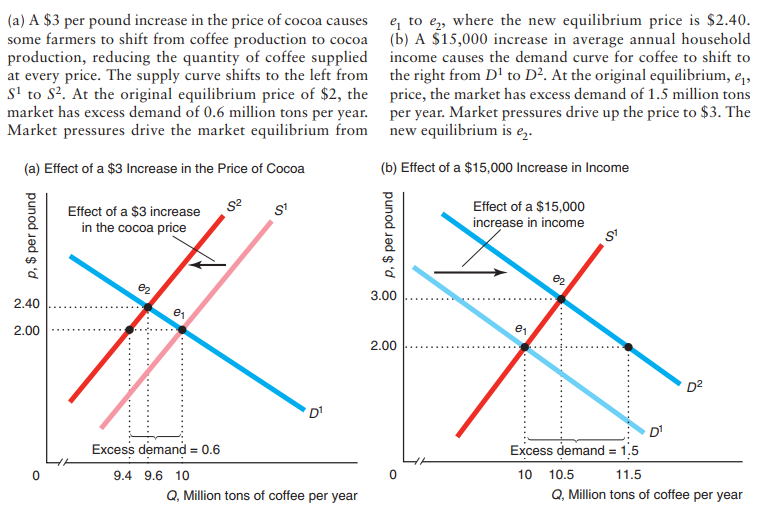
Price floor
Some government policies do more than merely shift the supply or demand curve. For example, governments may control prices directly, a policy that leads to either excess supply or excess demand if the price the government sets differs from the equilibrium price. When the government sets a price floor at \(\underline{p}\), the price at which goods are sold may not fall below \(\underline{p}\).

Price ceiling
When the government sets a price ceiling at \(\bar{p}\), the price at which goods are sold may be no higher than \(\bar{p}\).
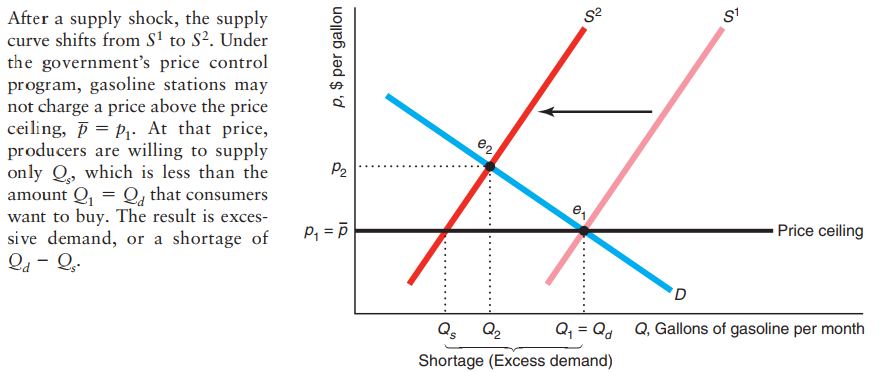
- Cost-benefit analysis of people's time worth
We care about excess demand because it is the inefficient outcome, there also allocation problems. But the price ceiling gives us equity.
Question: Assume that there is the shock either from demand or supply, after the schock happend, could you know, whether quantity of goods sold diminished or increased only by knowing price change?